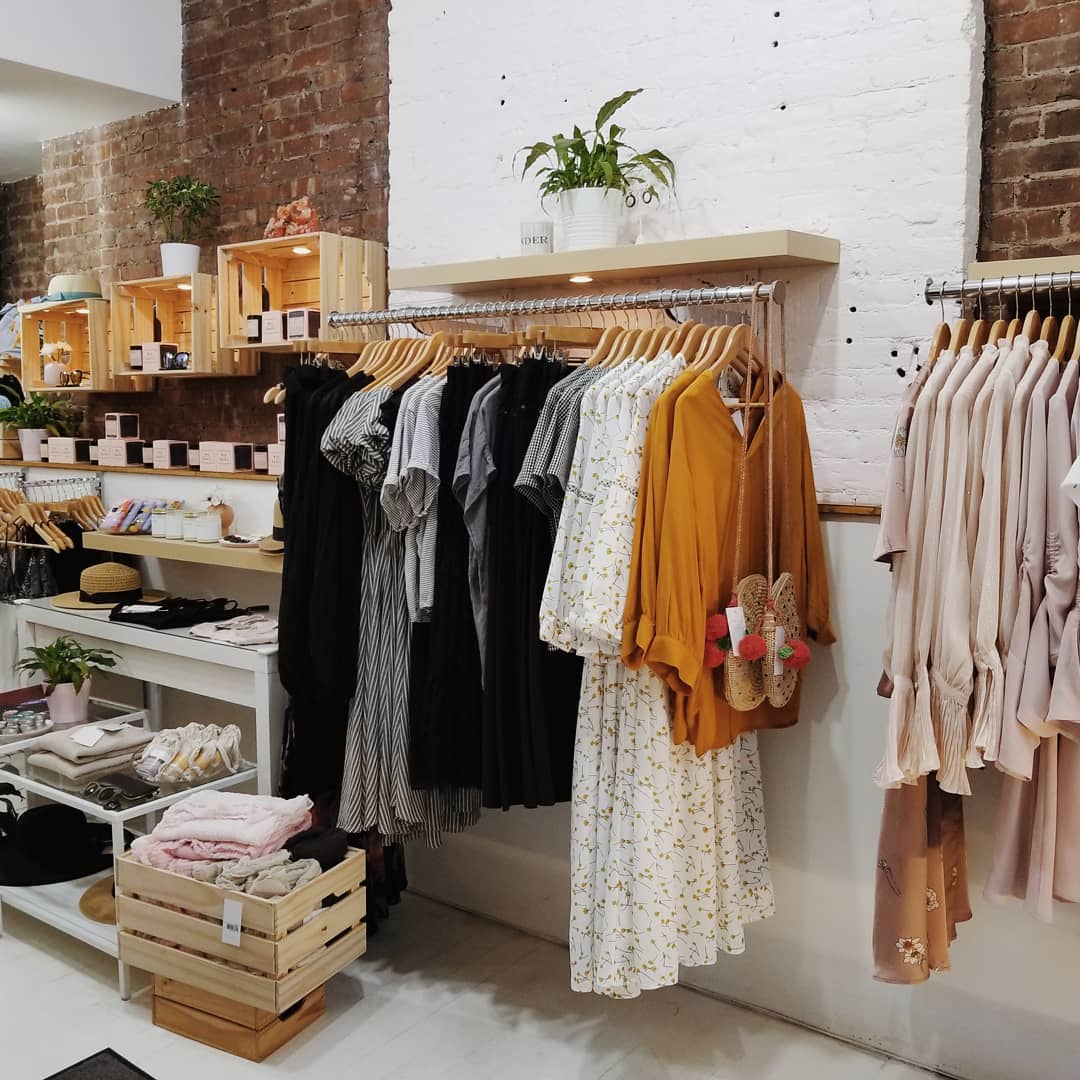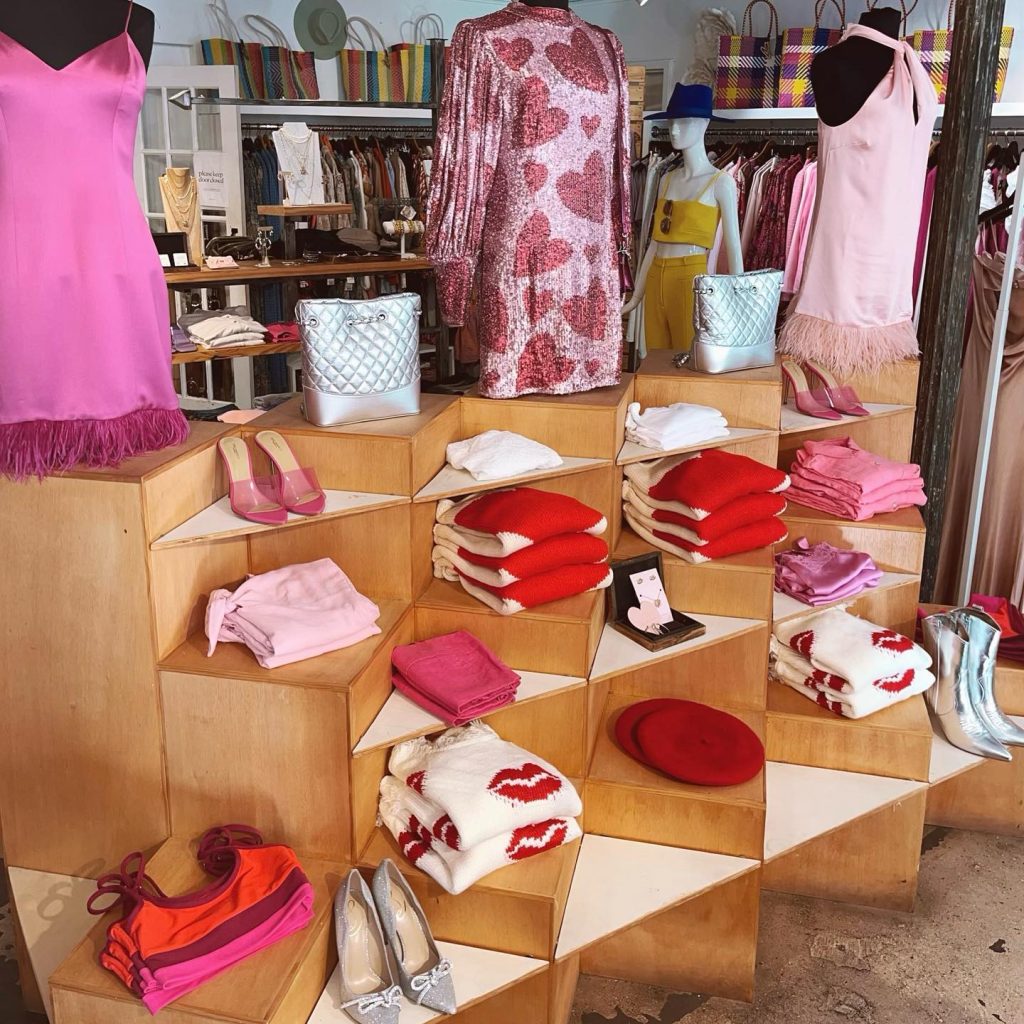Lasting Fashion: Just How Eco-Friendly Garments Is Forming the Future of Design
As the fashion market faces increasing scrutiny over its ecological influence, the surge of lasting fashion provides an appealing choice that straightens style with environmental duty. boutique fashion. Exactly how does this motion really influence the future trajectory of fashion, and what obstacles exist in advance in its extensive adoption?
Innovative Lasting Materials
As the fashion business comes to grips with its ecological effect, innovative lasting materials have become a crucial solution for lowering eco-friendly footprints. Amongst the most promising products are those stemmed from all-natural, sustainable resources, such as natural cotton, hemp, and bamboo. These products not only decrease reliance on fossil fuels however also minimize harmful chemical usage and water intake. Organic cotton, for example, uses dramatically much less water than traditional cotton and eliminates the requirement for harmful chemicals, thereby maintaining soil health and biodiversity.
Along with plant-based products, innovations in biofabrication have resulted in the advancement of lab-grown textiles. Mycelium natural leather, stemmed from mushroom roots, provides a biodegradable and versatile alternative to animal leather. Its production leads to substantially reduced carbon discharges and water usage, making it a more sustainable option for designer looking for to line up with green techniques.
Recycled products are likewise getting traction, with polyester made from recycled plastic bottles representing a considerable development. This technology not just draws away plastic waste from oceans and landfills however likewise minimizes power intake contrasted to creating virgin polyester. Together, these materials underscore the possibility for an extra sustainable fashion business, leading the means for environmentally aware style and manufacturing.
Eco-Conscious Production
Structure on the advancements in lasting products, the garment industry is likewise re-evaluating its manufacturing processes to further reduce environmental influence. Trick approaches include reducing water usage, minimizing carbon exhausts, and getting rid of unsafe chemicals. By embracing closed-loop systems, makers aim to recycle water and energy efficiently, considerably diminishing waste. The integration of renewable resource sources, such as solar and wind power, into production facilities better curtails reliance on fossil fuels.
One more critical element is the reduction of hazardous chemicals traditionally utilized in dyeing and completing fabrics. Eco-conscious suppliers are shifting towards plant-based dyes and waterless dyeing innovations, which not just secure neighborhood ecosystems however likewise enhance employee safety and security. Innovations like digital printing minimize material waste and power intake, supplying a cleaner choice to traditional methods.
Furthermore, transparency and traceability have ended up being paramount. With the development of blockchain innovation, business can currently give thorough understandings right into their supply chains, making certain ethical and ecologically pleasant techniques at each action. This openness develops customer depend on and encourages brands to keep high sustainability criteria. As the need for eco-conscious items expands, manufacturers are compelled to innovate, making sure that the future of fashion is both lasting and trendy.
The Rise of Upcycling
Upcycling, a transformative technique in sustainable fashion, involves creatively repurposing discarded materials into new, premium items. This ingenious technique not only decreases waste but likewise decreases the demand for basic materials, therefore reducing the environmental effect of clothing production. By reimagining and rebuilding existing things, designers and style brands have the ability to instill originality right into their collections while promoting ecological responsibility.

Additionally, the upcycling motion has equipped independent developers and tiny services, who typically lead in advancement because of their agility and creativity. By taking advantage of on the plentiful availability of unused products, these entities add to a circular economy, demonstrating that style can be both lasting and trendy. With upcycling, the industry takes significant strides in the direction of an extra liable and conscious future.
Thrift Culture's Effect
The growing thrift society dramatically reshapes the landscape of lasting style, news stressing the importance of conscious usage. This social shift urges customers to embrace pre-owned garments, consequently minimizing the demand for brand-new garment production and reducing ecological effect. Second hand buying not just extends the lifecycle of garments yet also reduces the carbon impact connected with production, carrying, and getting rid of garments.
A key element of second hand society is its democratization of fashion. By supplying a broad variety of styles from different periods at budget friendly costs, second hand stores make fashion available to a more comprehensive audience. This availability cultivates a sense of originality and creativity, as consumers mix and suit special items to curate customized closets without adding to the rapid fashion cycle.
Furthermore, thrift society promotes circularity in fashion, straightening with the concepts of a round economic situation. As even more customers and designers welcome second hand culture, the style market is compelled to adjust, incorporating sustainable methods to meet the expanding need for eco-conscious options.

Future Trends in vogue
Style's development is progressively formed by technological innovations and sustainability-driven campaigns. As customers end up being more eco mindful, the industry is reacting with groundbreaking developments that redefine the future of design. One famous pattern is the rise of electronic fashion, where digital garments can be worn in increased truth environments, significantly reducing textile waste. This change not just satisfies the digital-savvy customer but also decreases the environmental footprint typically linked with garment manufacturing.
In addition, the integration of blockchain innovation supplies brand-new possibilities in openness and traceability, enabling consumers to validate the sustainability credentials of their clothes. boutique fashion. This guarantees responsibility in supply chains and promotes honest sourcing techniques. 3D printing is yet another development that assures to revolutionize producing processes by enabling on-demand production, consequently minimizing his response excess stock and waste
As these modern technologies mature, they are poised to transform the fashion landscape, merging design with sustainability. The future of style, for that reason, lies in a seamless blend of technology, innovation, and ecological responsibility.
Verdict
The transformation of the fashion market via lasting practices indicates a pivotal shift towards ecological liability. This advancement not just aligns fashion with ecological sustainability however additionally establishes a precedent for future patterns focused on obligation and technology.
As the fashion market deals with increasing examination over its ecological influence, the surge of sustainable fashion provides an encouraging alternative that aligns style with environmental duty.As the fashion market grapples with its environmental effect, cutting-edge sustainable materials have actually arised as an essential service for lowering ecological footprints. With each other, these materials underscore the capacity for an extra sustainable style industry, paving the method for environmentally mindful style and manufacturing.
Building on the advancements in sustainable official statement materials, the style industry is additionally re-evaluating its production processes to better lower ecological impact. boutique fashion.Upcycling, a transformative technique in lasting fashion, includes creatively repurposing thrown out products right into brand-new, high-grade items